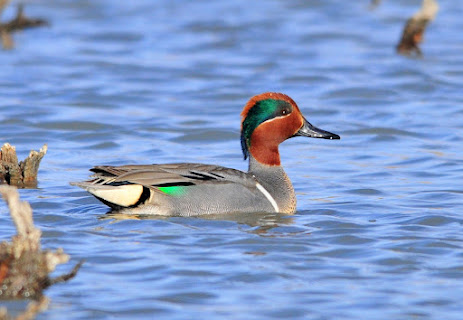Good news!
If you have followed my blog, you may know I have been looking for professional opportunities. Well, hear-ye, hear-ye, I am beyond grateful to share that I accepted a position at Audubon Society of Northern Virginia (ASNV), where I will be managing the adult education programs and supporting the chapter's work on conservation, advocacy, and youth education. I am thrilled and honored to be selected for the position, and very excited for the opportunity.
New office, yay!
From ASNV's website:
"Our mission is to engage all Northern Virginia communities in enjoying, conserving, and restoring nature for the benefit of birds, other wildlife, and people. We advance our mission through educational programs, citizen science, and advocacy initiatives. We envision a world where people, wildlife, and their habitats thrive."
I am very excited to get to know everyone who is involved with ASNV - the staff, board, volunteers and members.
My Birding Journey
I have wonderful early memories of going to feed ducks with my mom. I spent much of my childhood playing in nature and visiting parks with my family. I remember an occasion when I set up a laundry basket trap and spent hours trying to catch a sparrow. I was never successful at it, luckily, but I had a great deal of fun watching them flit around and take dust baths in the yard. My mom finally caved and brought home a beautiful pair of budgerigars (or parakeets) which are actually a small species of parrot. (Species, my favorite podcast, has a great episode on them and how insanely intelligent they are. Listen here.)
Last year I had the great fortune to spend four months in Costa Rica with a wonderful birder, Nina Romano, who was kind enough to lend me her binoculars. Then this past summer, at Nature Camp, I had the life-changing experience of holding a barn owl named Nono (see blog post) and wow. I was captivated. (Happy news, Nono was released!)
I got my own first pair of binoculars in August 2021, to prepare for the Arlington Regional Master Naturalist program. Matt Felperin gave us a fantastic overview of ornithology and took us out birding at Algonkian Park. I have also participated in Northern Virginia Birding Club, Huntley Meadows Birding Group and Birdability events, and learned a ton from birding friends like Emerson Milam and Stephen Perry. For my birthday, I received a copy of Wingspan (highly recommend).
Today's Outing
This morning I enjoyed a lovely birding outing with my ARMN classmate, Katherine Wychulis, her friend Jenny and our new birding friend, Christopher. One of the best things about birding is how friendly birders are, and how eager they are to help a new birder like myself. (Thank you Christopher for sharing your scope!)
As a group we observed 28 species, but I will share with you my favorite four, which are all species of ducks that I have never seen before today. What a great day!
A wonderful comic called Bird and Moon once described winter as "weird bird time."
Hooded Merganser, Lophodytes cucullatus
Photo credit: Len Blumin (
link)
Fun facts:
- Hooded Mergensers dive for fish, crayfish, and other food, seizing it in their thin, serrated bills.
- These ducks often display "brood parasitism," which means they lay eggs in other birds nests as a strategy to increase reproductive outcomes.
- Listen (courting male sounds like a frog!)
- Read more
Northern Shoveler, Spatula clypeata
Photo credit: Alan Vernon (
link)
Fun facts:
- Its 2.5inch long spoon shaped bill has 110 comblike projections along its edges, which filter out tiny crustaceans and seeds from the water.
- If startled while on its nest, a female Northern Shoveler will defecate on her eggs before departing to deter predators.
- Listen (males make a wheezy took-took sound)
- Read more
Anas crecca
Photo credit: Tom Koerner (
link)
Fun facts:
- These ducks are little! Their length varies from 12.2-15.3 in, vs. a Mallard duck which are 19.7-25.6 in.
- Green-winged Teals have closely spaced, comblike projections called lamellae around the inner edge of the bill, which they use to filter tiny invertebrates.
- Listen (males whistling and rapid chitter)
- Read more
Northern Pintail, Anas acuta
Photo credit: Frank Schulenburg (
link)
Fun facts:
- Northern Pintails migrate at night at speeds around 48 miles per hour.
- The longest nonstop flight recorded for a Northern Pintail was 1,800 miles.
- Listen (male makes a wheezy trainlike whistle)
- Read more
Here is the comic, by the way, that inspired my focus on ducks for this post. I highly recommend Rosemary's webcomic, called Bird and Moon. Check it out here. Also she has a very cute shop full of great presents for birders.
Image credit: Rosemary Mosco (
link)
Sources:
https://www.allaboutbirds.org/
https://www.audubonva.org/
https://www.birdandmoon.com/















